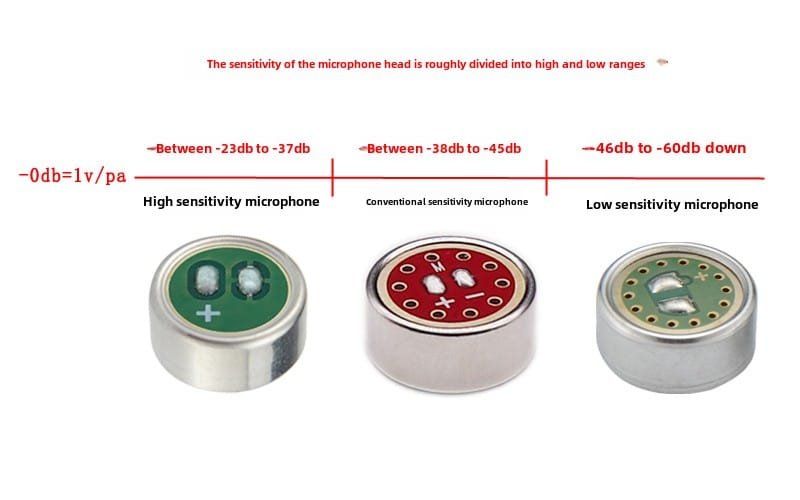
Is it better to have higher sensitivity of the microphone head?
The sensitivity of a microphone is not necessarily better the higher, but needs to be balanced according to specific application scenarios and requirements. The following is the key analysis of microphone sensitivity:
- Definition of microphone sensitivity
Sensitivity refers to the electrical signal intensity output by a microphone at a unit sound pressure, usually expressed in dBV/Pa or mV/Pa. The higher the sensitivity, the stronger the response of the microphone to sound. - Advantages of high sensitivity of microphone head
Capture faint sounds: suitable for recording studios, meeting minutes, and other scenes that require clear attention to detail.
Long distance sound pickup: It can effectively capture distant sound sources (such as natural sound collection) in a quiet environment. - Potential issues with high sensitivity of microphone heads
Environmental noise interference: It is easy to record background noise (such as fan sound, keyboard sound), which affects the signal-to-noise ratio.
Signal overload risk: High sound pressure levels (such as instruments, plosives) may cause distortion or plosives.
Equipment compatibility requirements: Low noise preamplifier must be used, otherwise it may amplify circuit noise. - Applicable scenarios for low sensitivity of microphone heads
High volume environment: Reduce distortion during live performances and drum recordings.
Noisy background: Outdoor interviews and stage performances can suppress irrelevant noise.
Simplify signal chain: Avoid overload issues when directly connecting ordinary devices. - Key selection factors for microphone head
Microphone signal-to-noise ratio (SNR): More important than sensitivity alone, high SNR microphones can retain more useful signals.
Dynamic range of microphone head: It needs to match the maximum sound pressure level of the sound source (such as about 60dB for human voices and 120dB for symphonies).
Micellar directivity: Heart shaped and super heart shaped directivity can physically reduce noise and compensate for the problems caused by microphone sensitivity. - Typical application comparison
Reasons for scene recommendation sensitivity
ASMR recording high (-30dBV/Pa) captures subtle friction sounds
Concert venue low (-50dBV/Pa) anti whistling, high sound pressure resistance
Outdoor Vlog with moderate (-40dBV/Pa) balance between human voice and ambient sound
Telephone conference with automatic gain control dynamically adapts to speakers at different distances - Actual test cases
After using a -32dBV high-sensitivity microphone, the background noise of a certain podcast anchor increased from -60dB to -52dB. Although the voice is bright, additional noise reduction processing is needed. After switching to a -38dBV microphone, the signal-to-noise ratio increased by 4dB and post-processing time decreased by 30%.
Conclusion on sensitivity of microphone head:
The sensitivity of the microphone head needs to be considered in conjunction with other parameters such as directionality, frequency response, and maximum SPL.
Professional recording studios often have multi sensitivity microphones to meet different needs. Ordinary users can choose the one that is suitable for their main scene within the error range. Blindly pursuing high sensitivity may increase the complexity of use.

